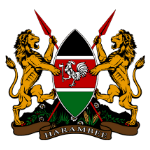Background
The RMNCAH scorecard in Kenya is an integrated, action-oriented management and accountability tool that supports Kenya’s Ministry of Health (MoH) Reproductive, Maternal, Newborn, Child and Adolescent Health (RMNCAH) Investment Framework; Health Sector Strategic Plan II; and the GOK’s commitment to Universal Health Care (UHC) by 2030. It is customizable, dynamic and used extensively at national and decentralized levels (county, sub-county and facility) by MoH units and partners to track the progress of priority indicators and targeted outcomes for RMNCAH. It is used by senior officials at both political and technical levels to monitor performance, identify bottlenecks and advance evidence-informed action. It has further reduced social and geographic disparities in access to, and utilization of, quality RMNCAH services. With strong political leadership and commitment, Kenya is leading the way in scorecard decentralisation and is a global best practice, with several countries following Kenya’s lead and implementing the scorecard in support of evidence-based decision-making and timely responses to service gaps and bottlenecks identified, leading to better health outcomes.
How it works
The scorecard is populated using DHIS2 at the national level. Counties then analyse the scorecard during MoH county performance review meetings and sub-county data review meeting and agree on follow-up actions. These actions are then entered into the RMNCAH Scorecard Action Tracker by the Sub-County Health Records and Information Officers (SCHRIOs). The County Health Management Team (CHMT) also holds regular performance review meetings in the presence of partners to review the scorecards and identify solutions which are then captured in the action tracker.
Impact
Resource mobilisation
Members of the County Assemblies (MCAs) are actively using RMNCAH scorecard data to solicit resources for their respective wards resulting in increases in County Assembly Fund allocations for RMNCAH services. In Siaya County, MCA used the scorecard to advocate for resources and the overall county health budget has increased annually since 2017 following scorecard analysis whereas Migori county recorded a 40% increase in funding for family planning and adolescent health interventions.
Service delivery improvements
Counties are actively using the scorecard in support of evidence-informed decision-making and timely responses to service gaps and bottlenecks identified. In Migori county, use of the scorecard led to 31% increase in women attending prenatal appointments, and skilled deliveries also increased from 58% to 78% with the scorecard review leading to Traditional Birth Attendant (TBA) referral training. In Siaya County, mosquito nets coverage for pregnant women increased by 30% after scorecard review and action.
In addition, systems have been strengthened while the scorecard is also being effectively used as an advocacy and resource mobilisation tool. In Siaya and Migori Counties, the scorecard was linked to revitalisation of Community Units and improved implementation of the MoH’s Community Strategy. In Siaya County, the scorecard management tool led to construction of 18 new maternity units and 21 medical staff houses.
A number of counties also set up routine Stakeholder Meetings with partners to improve joint prioritisation & programming and reduce duplication. Ownership of the RMNCAH scorecard process and resultant changes in management practices have also been widely reported. MoH officers report that the scorecard complements and strengthens existing efforts to improve management capacities and performance.
Key success factors
- Fully decentralised in Kenya’s 47 counties
- Publicly shared
- Integrated into DHIS2 which allows easy population every
- Action tracker used to enhance accountability at all levels
- Used at community level: The scorecard has improved community engagement, increased ownership of health issues and enhanced involvement in the implementation of interventions for better health outcomes.
